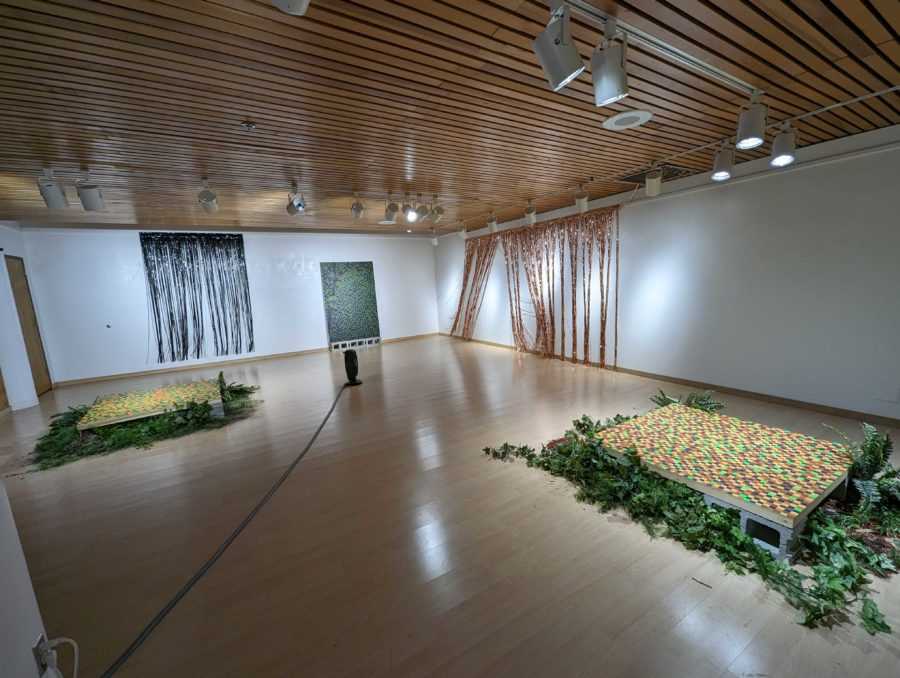Wood murals have become a captivating form of art that seamlessly blends the beauty of nature with the creativity of human design. These stunning pieces of artwork are created using various woodworking techniques and are gaining popularity for their unique ability to enhance any space.
Each wood mural is a masterpiece that tells a story. From intricate carvings to colorful patterns, every piece is carefully crafted to reflect the beauty of the natural world. The use of different types of wood, such as oak, maple, and walnut, adds depth and texture to the artwork, creating a truly mesmerizing visual experience.
What makes wood murals even more captivating is the way they transform a space. Whether it’s a living room, a bedroom, or a corporate office, these art pieces bring an element of warmth and harmony to any environment. The natural grains and tones of the wood create a soothing and peaceful ambiance, inviting a connection with nature even in the heart of a bustling city.
Wood murals are not just decorative pieces; they are a symbol of the enduring connection between human creativity and the natural world. These artworks serve as a reminder of the importance of preserving our environment and embracing the beauty that surrounds us. By bringing nature indoors, wood murals spark a sense of awe and appreciation, reminding us to slow down and admire the wonders of the world.
The use of wood as a medium for murals is a unique and innovative way for artists to express themselves. Wood murals not only allow artists to showcase their creativity, but also brings a natural element to their work.
Artists have the opportunity to incorporate the natural grains and patterns of the wood into their designs, creating a harmonious fusion of art and nature. By combining various wood types, textures, and colors, artists can create intricate and captivating murals that showcase their artistic vision.
Wood murals also provide a sense of warmth and depth to any space. The rich colors and textures of the wood add a touch of natural beauty and enhance the overall aesthetic of the artwork. Whether it’s a realistic depiction of a natural landscape or an abstract composition, wood murals have the power to evoke emotions and capture the imagination.
Furthermore, wood murals are durable and long-lasting. Unlike traditional paintings that can fade or deteriorate over time, wood murals can withstand the test of time, making them a sustainable art form. The natural resilience of wood ensures that these murals can be enjoyed for years to come, providing a lasting artistic expression.
- Wood murals serve as a medium for artists to express their unique artistic vision and showcase their creativity.
- They bring a natural element to the artwork, incorporating the natural grains and patterns of the wood.
- The use of different wood types, textures, and colors allows for intricate and captivating designs.
- Wood murals add warmth and depth to any space, enhancing the overall aesthetic.
- They are durable and long-lasting, providing a sustainable art form that can be enjoyed for years to come.
Natural Appeal

Wood murals are a unique form of artistic expression that brings together the beauty of nature and the creativity of human artistry. The natural appeal of wood as a medium creates a visual experience that is both captivating and soothing.
With their organic textures and warm tones, wood murals have the power to transform any space into a serene oasis. Whether it’s a living room, bedroom, or office, the addition of a wood mural instantly adds a touch of nature’s beauty and tranquility.
One of the reasons why wood murals have such a strong natural appeal is their ability to showcase the intricate details of different wood grains. Each piece of wood is unique, with its own patterns and colors, making every mural a one-of-a-kind masterpiece.
Another aspect that adds to the natural appeal of wood murals is their sustainability. Wood is a renewable resource that can be sourced responsibly, making it an eco-friendly choice for both artists and homeowners.
The Beauty of Imperfection
Wood murals often embrace the beauty of imperfection, showcasing knots, cracks, and other natural flaws. These imperfections add character and depth to the artwork and serve as a reminder that even nature is not flawless.
The acceptance of imperfections in wood murals teaches us to embrace our own imperfections and find beauty in our unique qualities.
A Connection with Nature
By incorporating elements of nature into our living spaces, we are reminded of our connection with the natural world. Wood murals offer a way to bring the serenity of nature inside, creating a harmonious environment that promotes relaxation and well-being.
The presence of wood murals in our homes or workplaces can even improve our mental health by reducing stress and increasing our sense of calm.
Design and Composition
The design and composition of wood murals play a vital role in their overall aesthetic appeal. Each mural is carefully crafted to create a harmonious balance between nature and art. The artist considers various elements such as color, texture, and form to bring the vision to life.
One key aspect of the design is the choice of wood. Different types of wood have unique characteristics that can contribute to the overall mood of the mural. Lighter woods, such as birch or maple, can create a sense of brightness and openness, while darker woods, like walnut or mahogany, can add richness and depth to the composition.
The composition of the mural involves arranging individual wood pieces in a way that creates a cohesive and visually pleasing design. The artist carefully considers the placement of each piece to ensure that it enhances the overall composition and tells a story. They may experiment with different layouts and patterns before settling on the final arrangement.
In some cases, the artist may also incorporate other materials, such as metal or glass, to add a unique dimension to the mural. These materials can be used to create intricate details or add a pop of color to the overall design.
Additionally, the size and scale of the mural are important considerations in the design process. The artist must determine how the mural will fit into its intended space and how it will interact with its surroundings. This may involve creating a smaller, more intimate piece for a residential setting or a larger, more dramatic mural for a public space.
The design and composition of wood murals require a careful balance of artistic vision and technical skill. The artist must be able to envision the final result while also considering the limitations and possibilities of the materials and techniques used. The end result is a unique fusion of art and nature that adds beauty and warmth to any space.
Intricate Carving Techniques

Wood murals are not only a beautiful representation of nature, but they are also a testament to the incredible craftsmanship and skill of the artists who create them. One of the key elements that sets wood murals apart is the intricate carving techniques that are used to bring them to life.
These carving techniques require a delicate touch and a deep understanding of wood as a medium. Artists use a variety of tools and methods to create the intricate details that make wood murals so captivating. One common technique is relief carving, where the artist carves away parts of the wood to create a three-dimensional effect. This technique adds depth and dimension to the mural, making it appear more lifelike.
Another technique that is often used in wood murals is chip carving. This involves using a chisel or knife to remove small chips of wood, creating intricate designs and patterns. Chip carving requires precision and control, as the artist must carefully remove the wood while maintaining the desired design.
In addition to relief carving and chip carving, wood mural artists also use techniques such as incised carving, where lines are cut into the wood to create texture, and pierced carving, where holes are carved out to create openwork designs. These techniques allow for a wide range of artistic expression and add complexity to the final piece.
The artists who specialize in wood murals spend years honing their craft and perfecting their technique. They have a deep passion for the medium and a dedication to bringing nature to life through their art. Their skill and talent are evident in the intricate details and breathtaking beauty of their wood murals.
Wood murals are truly a fusion of art and nature, and the intricate carving techniques used to create them are what make them so unique and special. Each piece is a labor of love and a testament to the skill and creativity of the artist. Whether depicting a serene forest scene or a majestic wildlife portrait, wood murals are sure to captivate and inspire all who see them.
Craftsmanship and Skill
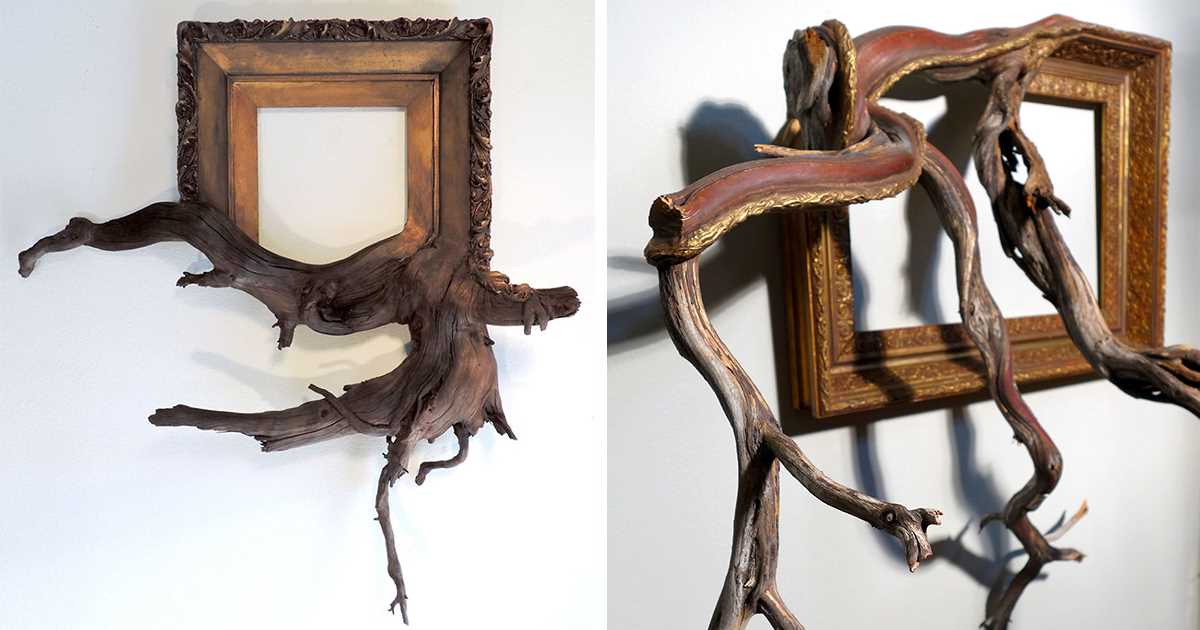
The creation of wood murals requires a high level of craftsmanship and skill. From the selection of the wood to the intricacy of the carving, each step in the process reflects the expertise of the artist.
Wood artists must have a deep understanding of the characteristics of different types of wood, such as their grain patterns and density, in order to choose the most suitable material for their artwork. They carefully consider the color and texture of the wood to enhance the overall aesthetic of the mural.
Once the wood is selected, the artist can begin the meticulous process of carving. This requires precision and patience, as even the smallest mistake can ruin the entire piece. The artist must possess the ability to visualize the final product and carefully bring it to life through their carving techniques.
Attention to Detail
The level of detail achieved in wood murals is truly impressive. The artist must have a keen eye for detail and the ability to work with small tools to create intricate patterns and textures. Each carving stroke is deliberate, with the artist dedicating hours of work to achieve the desired result.
The attention to detail in wood murals is further highlighted by the use of shading and depth. By varying the depth of the carving and adding subtle shadows, the artist is able to create a sense of dimension and realism in their work. This technique adds depth and texture to the mural, making it truly captivating.
Collaboration and Learning

The creation of wood murals also involves collaboration and learning. Many artists are part of a larger community, where they can exchange ideas, techniques, and insights. This collaboration allows them to continually refine their skills and push the boundaries of their artistic abilities.
Wood artists often participate in workshops and apprenticeships to deepen their understanding of different carving techniques. By learning from more experienced artists, they can hone their skills and incorporate new approaches into their own work.
| Benefits | Challenges |
|---|---|
| Brings nature indoors | Requires patience and precision |
| Unique and personalized artwork | Needs knowledge of wood characteristics |
| Adds warmth and beauty to any space | Demanding and time-consuming process |
Embracing the Beauty of Wood

Wood has long been revered for its natural beauty, durability, and versatility. From the ancient structures of the world’s great civilizations to the modern furniture designs of today, wood continues to captivate and inspire.
Aesthetic Appeal

One of the most alluring aspects of wood is its inherent aesthetic appeal. Its unique grain patterns, varying colors, and organic textures create a sense of warmth and visual interest. Whether it’s the deep, rich tones of mahogany or the light, airy hues of maple, each type of wood brings its own distinctive character to any space it inhabits. Wood can be polished to a smooth, glossy finish, or left in its natural state to showcase its raw beauty.
Sustainable and Eco-Friendly
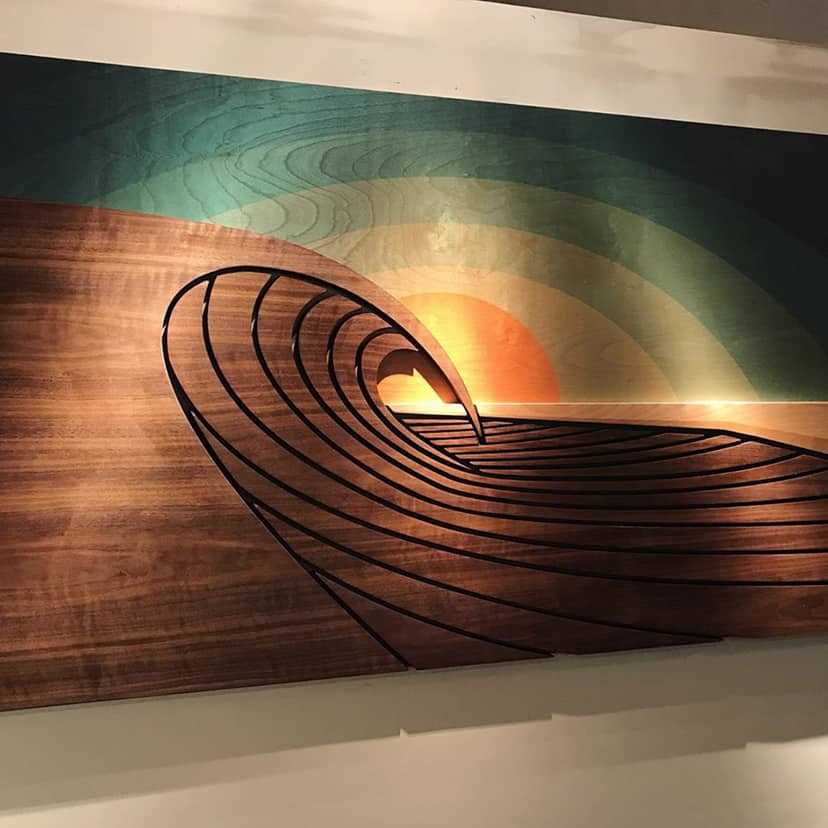
In addition to its aesthetic qualities, wood is also a sustainable and eco-friendly material. Unlike other building materials, such as steel or concrete, wood is a renewable resource that can be responsibly harvested and replenished. In fact, the proper management and conservation of forests can ensure a constant supply of wood for generations to come. Using wood products in construction and design also reduces carbon emissions and energy consumption, making it a greener choice for the environment.
Embracing the beauty of wood means recognizing and appreciating the unique qualities it brings to our lives. From its timeless aesthetic appeal to its sustainable nature, wood continues to be a source of inspiration for artists, designers, and nature enthusiasts alike.
Texture and Sensory Experience
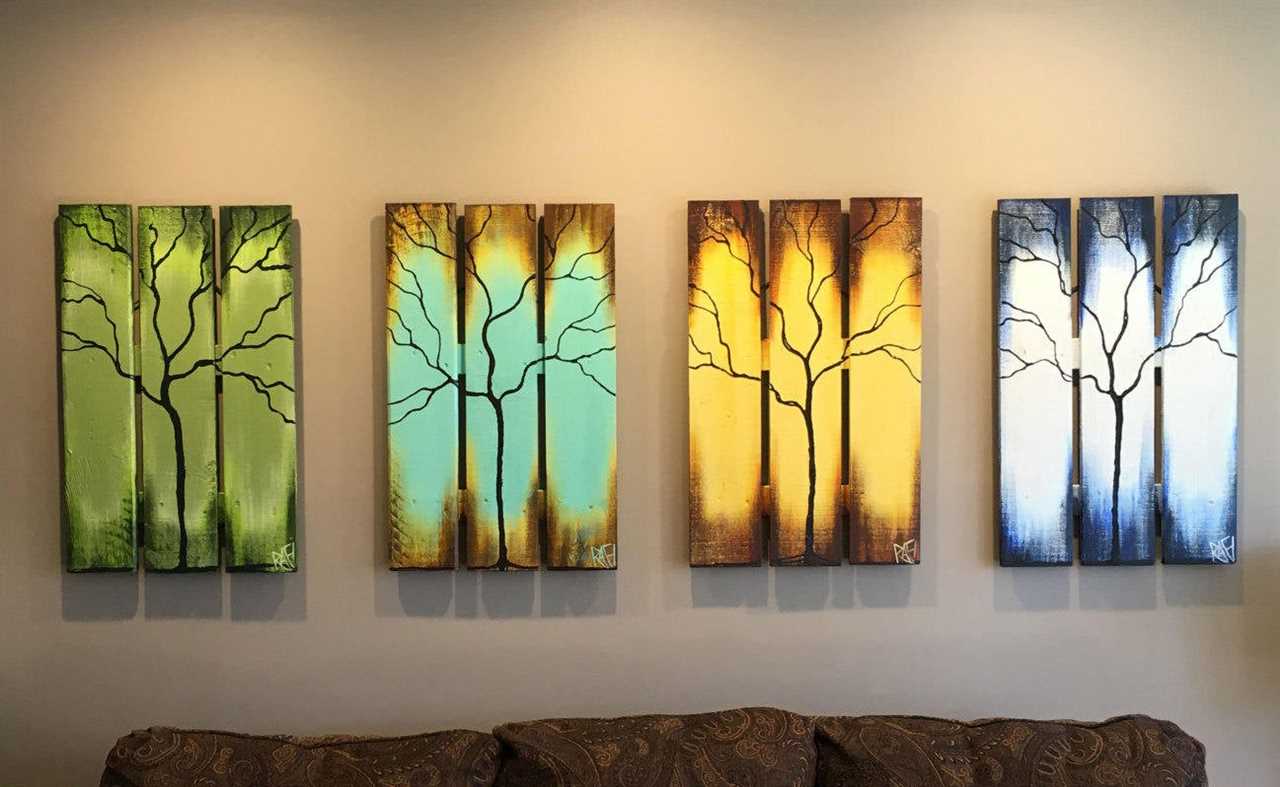
Wood murals provide a truly unique sensory experience through their texture. The natural grain of wood creates a tactile and visual sensation, adding a rich and organic element to the artwork. Whether the mural is carved, layered, or painted, the texture of the wood adds depth and dimension, captivating the viewer’s senses.
When walking up to a wood mural, one can’t help but run their fingers along the intricate patterns and grooves. The tactile experience of feeling the smoothness or roughness of the wood adds an additional layer of connection to the artwork. This interaction also allows the viewer to appreciate the craftsmanship and skill required to bring the mural to life.
Not only does the texture of wood appeal to the sense of touch, but it also offers a visually stimulating experience. Each swirl and knot in the wood adds its own unique character and charm to the mural. The natural colors and variations in the wood grain create a dynamic and visually captivating display that can change depending on the lighting and perspective.
Wood murals are not just a visual feast for the eyes but a multisensory experience that engages all the senses. They invite viewers to explore the artwork through touch, sight, and even smell, as the natural scent of wood enhances the overall sensory experience.
| The Benefits of a Texture and Sensory Experience: |
| 1. Engages multiple senses, creating a more immersive experience |
| 2. Adds depth and dimension to the artwork |
| 3. Creates a stronger connection between the viewer and the artwork |
| 4. Showcases the talent and craftsmanship involved in creating wood murals |
| 5. Provides a unique and visually captivating display |
Application and Versatility
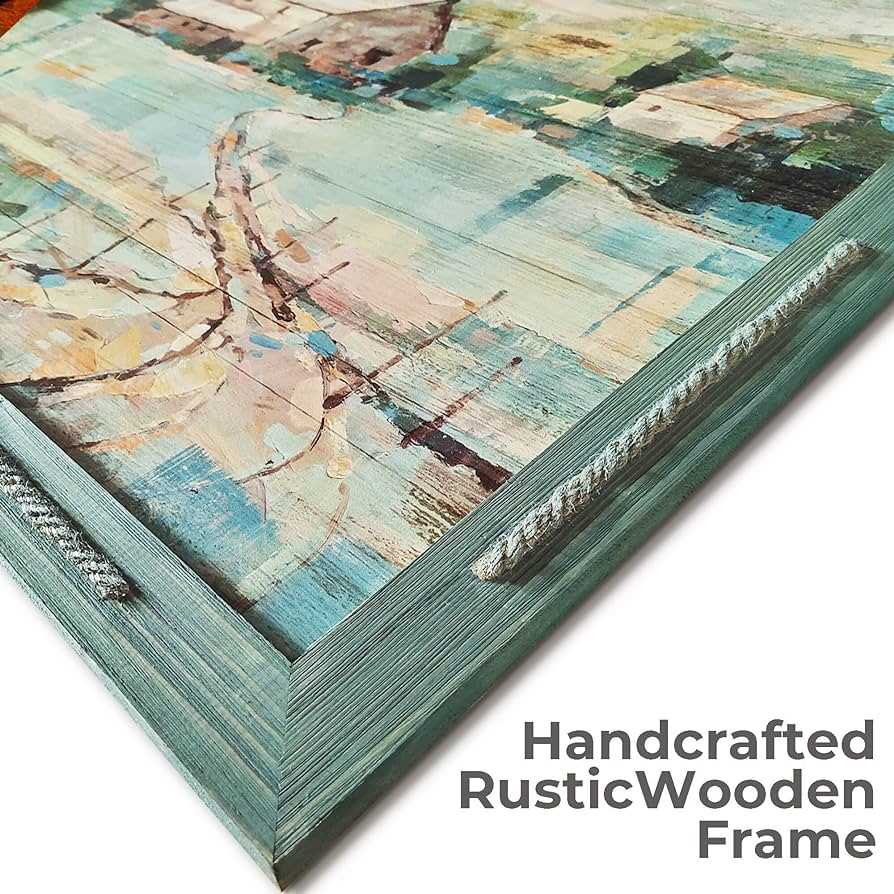
The application of wood murals is wide-ranging and can be used in various settings to enhance the atmosphere and add a touch of nature to any space. Whether it is a residential or commercial space, wood murals can be a unique and captivating addition.
Residential Spaces
In residential spaces, wood murals can be used in different areas to create a focal point, add depth, or bring a sense of tranquility. They can be installed in living rooms, bedrooms, or even as a statement piece in the entryway. These murals can also be customized to match the existing décor and style of the room.
Commercial Spaces

In commercial spaces, wood murals can be utilized in various ways to create a memorable impression on employees and customers alike. They can be installed in offices, lobbies, restaurants, or retail stores to create a warm and inviting atmosphere. Wood murals can also be a great way to showcase the brand’s identity and values.
Furthermore, the versatility of wood murals allows for endless possibilities. They can come in different sizes, shapes, and designs to suit any space. Whether it is a traditional or modern setting, wood murals can be customized to meet the specific requirements of the project.
- Wood murals can be used as standalone pieces of art or in combination with other materials such as metal or glass.
- They can be installed as wall-mounted murals or as freestanding structures.
- Wood murals can also be used as room dividers or privacy screens, providing a functional and decorative element.
Overall, the application and versatility of wood murals make them a perfect choice for anyone looking to bring the beauty of nature indoors while adding a unique and artistic touch to their space.
Enduring Beauty

The wood murals created by talented artisans are not only breathtaking works of art, but also a lasting testament to the beauty of nature. Each piece is meticulously handcrafted using a variety of techniques and materials, resulting in a unique and stunning masterpiece.
These wood murals capture the essence of nature, bringing the outdoors into your home or office. The intricate details, vibrant colors, and rich textures of the artwork create a sense of depth and dimension, making each piece truly come alive.
One of the most remarkable aspects of these wood murals is their enduring beauty. Unlike other forms of art that may fade or deteriorate over time, these murals are crafted to stand the test of time. The wood used is carefully selected for its durability and resistance to decay, ensuring that the artwork remains beautiful and intact for years to come.
Not only do these wood murals provide a stunning visual focal point for any space, but they also have a unique tactile element. The natural grain of the wood adds texture and depth to the artwork, inviting viewers to touch and feel the intricate details.
Whether you choose a wood mural depicting a serene forest scene, a majestic mountain landscape, or a vibrant floral arrangement, you can be confident that you are investing in a piece of art that will bring joy and beauty to your home or office for generations to come. The enduring beauty of these wood murals is a testament to the talent and passion of the artisans who create them, as well as the timeless elegance of nature itself.

I am a mural enthusiast and a fervent admirer of street art. Rather than creating murals myself, I am passionate about collecting them. My love for street art knows no bounds. I am dedicated to curating and cherishing these artworks that grace the streets. My collection stands as a testament to my profound appreciation for this form of artistic expression.
read about me

